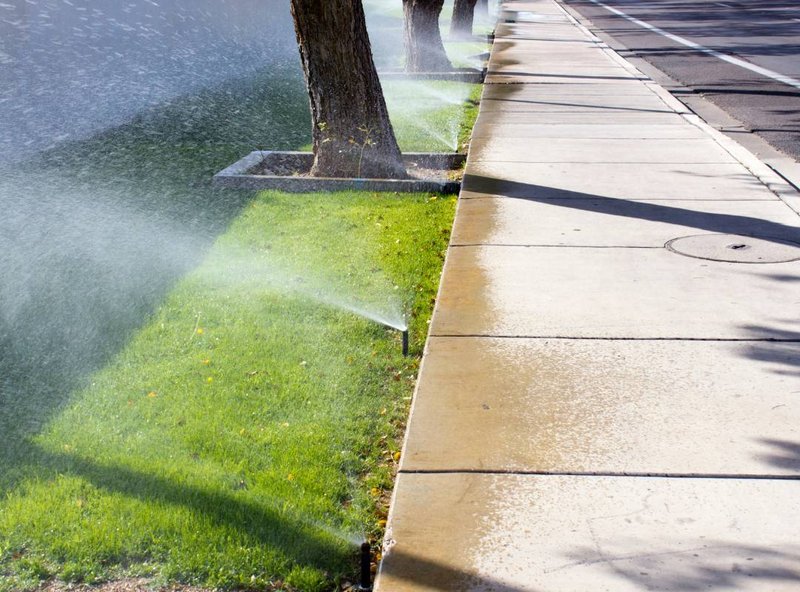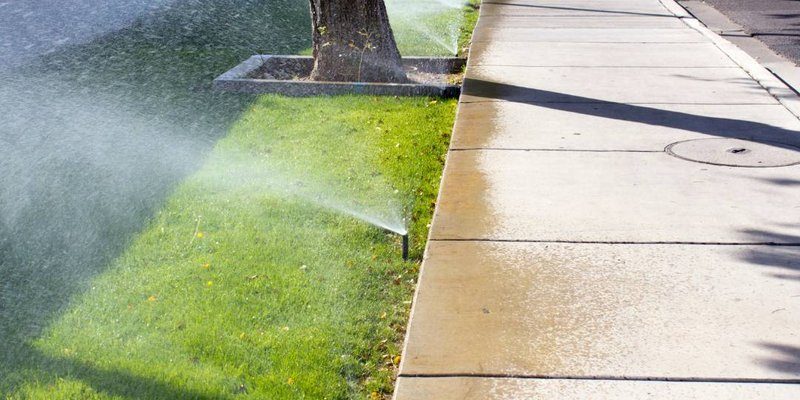
Here’s the thing: hardware and water don’t get along, even in tiny doses. Sometimes all it takes is a stray droplet, and suddenly your remote stops syncing, your Wi-Fi cuts out, or your security camera won’t turn on. If you’ve ever tiptoed around a puddle, hoping your extension cord isn’t live, you know the anxiety. Most people don’t realize how exposed their equipment is until something goes wrong. Let me explain how sprinkler systems—designed to keep grass alive—can make your electronics dead, and what you can do about it.
How Water Damages Hardware: The Sneaky Spread of Moisture
You might be wondering why a little bit of water is such a big deal for electronics. Honestly, the damage isn’t always dramatic or immediate. Sometimes, it’s a slow and invisible process—like rust creeping into old garden tools. When a sprinkler mist lands on a device, it can slip past seals, sneak under cases, and settle on delicate circuit boards. Over time, even a small amount of moisture can eat away at soldered connections, short out pins, or spark corrosion.
Water acts like a bridge for electricity. Instead of flowing smoothly through the right channels on a circuit board, electricity can jump to the wrong place when there’s water around. That’s when you get all sorts of weird behavior: remote controls that won’t pair, batteries that run out faster than usual, or devices that refuse to reset or boot up. If your Logitech remote stops talking to the TV or your Samsung hub suddenly turns off after a rainy morning, water exposure could be the culprit.
Short Circuits and Corrosion: The Hidden Killers
It doesn’t end with just a quick zap. Water—and especially hard water with minerals—causes metal contacts to corrode. At first, you might notice a bit of lag or an unresponsive button. But as corrosion builds, it acts like sand in a gear, slowing and eventually breaking the electrical connections that make your device work. Sometimes, the hardware will still try to code or sync, but never quite completes the job.
Common Signs of Water Damage From Sprinklers
Catching hardware problems early is key if you want to save your device. If you know your electronics are close to a sprinkler system, look out for these warning signs:
- Batteries draining faster than normal: Moisture speeds up chemical reactions inside batteries. You’ll notice your remote, sensor, or smart hub needs new batteries every week instead of every few months.
- Buttons or screens stop responding: Ever press a button and nothing happens? Water sitting behind a keypad or touchscreen creates electrical “dead spots.”
- Glitchy syncing or pairing issues: Devices that usually connect quickly may suddenly refuse to sync, reset, or pair. This is especially true for brands like Harmony, Roku, or older universal remotes that rely on small contacts and IR sensors.
- Rust, discoloration, or a musty smell: Pop the battery cover or check the ports. If you see greenish residue, rust, or just smell something funky, that’s corrosion. It means water made its way inside.
Quick tip: If you spot any of these signs after a sprinkler runs nearby, immediately remove power (batteries or plug). The less time water has to do damage, the better your chances of recovery.
First Steps: What To Do If Your Hardware Gets Wet
So your device took a hit from the sprinkler. Don’t panic—just act fast and carefully. Here’s my go-to process when water gets where it shouldn’t:
- Turn it off and disconnect it: Seriously, don’t wait. Powering down is the most important move, since running electricity through wet hardware is asking for short circuits.
- Remove batteries or unplug: Open up the battery compartment (if it has one) and take everything out. If it’s a hub or something plugged in, yank the power cord right away.
- Gently dry the exterior: Use a soft towel or microfiber cloth to dab away any visible droplets. Don’t shake, blow, or use a hair dryer—the goal is to avoid pushing water deeper inside.
- Open covers or cases (if possible): If your hardware lets you pop off a cover or remove a battery door, do it. This helps air get inside and speeds up the drying process.
- Air dry in a dry, warm place: Place the device somewhere warm (but not hot—no ovens or radiators). If you can, use a fan or place it in front of good airflow for 24–48 hours.
You may have heard about using uncooked rice to dry electronics. It’s not magic, but it can help absorb moisture if you have no better options. Silica gel packs (the little “do not eat” packets) work even better!
When To Try Turning It Back On
After at least a full day (preferably two), check for obvious moisture. If there’s no condensation or dampness, try putting the batteries back in or plugging it in. Cross your fingers, because if everything was dried in time, it might just power up.
Dealing With Sync, Code, and Pairing Issues After Water Exposure
Sometimes your hardware powers up, but it acts weird—won’t sync, refuses to reset, or can’t pair with other devices. This happens a lot with smart remotes, universal remotes, or hubs after water exposure.
Here’s how I troubleshoot these headaches:
- Try a full reset: Most devices have a reset button (sometimes hidden inside the battery compartment). Hold it down and follow the brand’s instructions for a factory reset. Resetting can clear up weird glitches caused by moisture or corrosion.
- Reprogram or recode the device: If you use a remote, try re-entering the control codes for your TV or other gear. This forces the remote and device to “shake hands” again, which often fixes pairing issues.
- Replace the batteries: Swap in a fresh set after a water event. Old or wet batteries cause syncing problems every time.
- Check for firmware updates: Brands like Logitech, Roku, and Samsung sometimes release updates that patch weird bugs—some of which might be worsened by water exposure. Connect your device (if possible) to Wi-Fi and see if an update is available.
If you still can’t sync or pair, there may be permanent board damage. Sometimes, it’s cheaper (and safer) to replace a badly damaged remote or hub than to keep wrestling with unreliable hardware.
Preventing Water Damage From Sprinkler Systems
Prevention beats repair every time, especially when it comes to electronics and water. Here are a few ways to keep your hardware safer—even if your sprinkler system thinks it’s auditioning for Niagara Falls.
- Keep electronics indoors or well above ground level: Even “outdoor” rated devices last longer if they’re high up, under eaves, or inside weatherproof boxes.
- Use splash guards and covers: For outdoor outlets or smart home hubs, invest in waterproof covers or at least use plastic bags as a quick fix if rain or sprinklers are in the forecast.
- Reposition sprinkler heads: Sometimes, a simple adjustment is all it takes. Make sure no heads aim directly at windows, patios, or places where electronics hide.
- Schedule watering times carefully: Water early in the morning when you know no one’s using the backyard—and electronics aren’t likely to be out there charging or syncing.
- Regular inspections: Check your hardware after every watering session for dampness or signs of trouble. Spotting issues early can mean the difference between an easy fix and a trip to the electronics recycling bin.
Outdoor vs. Indoor Equipment: Special Considerations
Some hardware is designed for indoor use only. Putting a basic remote, router, or hub anywhere near a sprinkler system is asking for trouble. For outdoor setups, always choose equipment rated “weatherproof” or “water-resistant”—and even then, give it extra protection.
Comparing Recovery: Universal vs. Brand-Specific Remotes
Honestly, not all remotes or hubs recover from water damage equally. Let’s say you have a universal remote (like GE or RCA) and a brand-specific remote (like a Samsung or Apple TV remote). Here’s what you need to know:
- Universal remotes tend to be cheaper, simpler, and sometimes less tightly sealed. If they get wet, the odds of permanent code or syncing damage are higher, but you also won’t feel as bad replacing them if all else fails.
- Brand-specific remotes (Logitech, Roku, etc.) usually cost more and are packed with tech. They may have stronger seals, but if water does get past, it can destroy tiny IR sensors or Bluetooth chips. Sometimes, expensive isn’t more repairable—it just hurts more when it’s ruined.
The recovery steps are basically the same: dry, reset, and re-sync. If a remote still won’t code or pair after that, replacing it is probably your best bet.
When To Repair vs. Replace: Making the Call
It’s natural to want to save your hardware, especially if it’s pricey or controls your whole setup. But sometimes, water exposure leaves damage that you can’t see—tiny shorts or deep corrosion. If you’ve tried drying, battery swaps, resets, and re-syncing with no luck, it’s time to weigh your options.
- Repair: Worth attempting if the device is valuable and you’re comfortable opening it up. Sometimes, a careful cleaning with isopropyl alcohol can rescue lightly corroded contacts. Just know this is a “try at your own risk” move.
- Replace: Best if the device still refuses to work, shows obvious rust or cracks, or started to smell burnt after water exposure. For remotes and hubs, replacement is often cheaper (and safer) than trusting a half-recovered device.
If you go for a replacement, consider moving the replacement further from sprinkler zones, or invest in a weatherproof cover this time around.
Choosing the Right Hardware Placement to Avoid Future Issues
Now that you know how ugly water damage can get, the smart move is to plan ahead. Before you set up a new router, smart hub, or remote charging dock, think about where your sprinklers spray, where rain might blow in, and which areas dry out quickly. Avoid placing hardware below windows, next to open doors, or under leaky gutters. For outdoor tech, pick gear rated for high humidity and temperature swings, and set reminders to check connections after every watering cycle.
Think of your electronics like pets—they’ll live longer, work better, and give you less trouble if you keep them dry and watch them closely!
Preventing water exposure is always easier than fixing the aftermath. But if you ever find yourself facing a soggy remote or a glitchy hub, remember: act fast, dry everything thoroughly, and don’t be afraid to replace what won’t recover. If you protect your devices from sprinkler misfires, you’ll spend less time troubleshooting and more time enjoying technology that actually works.
